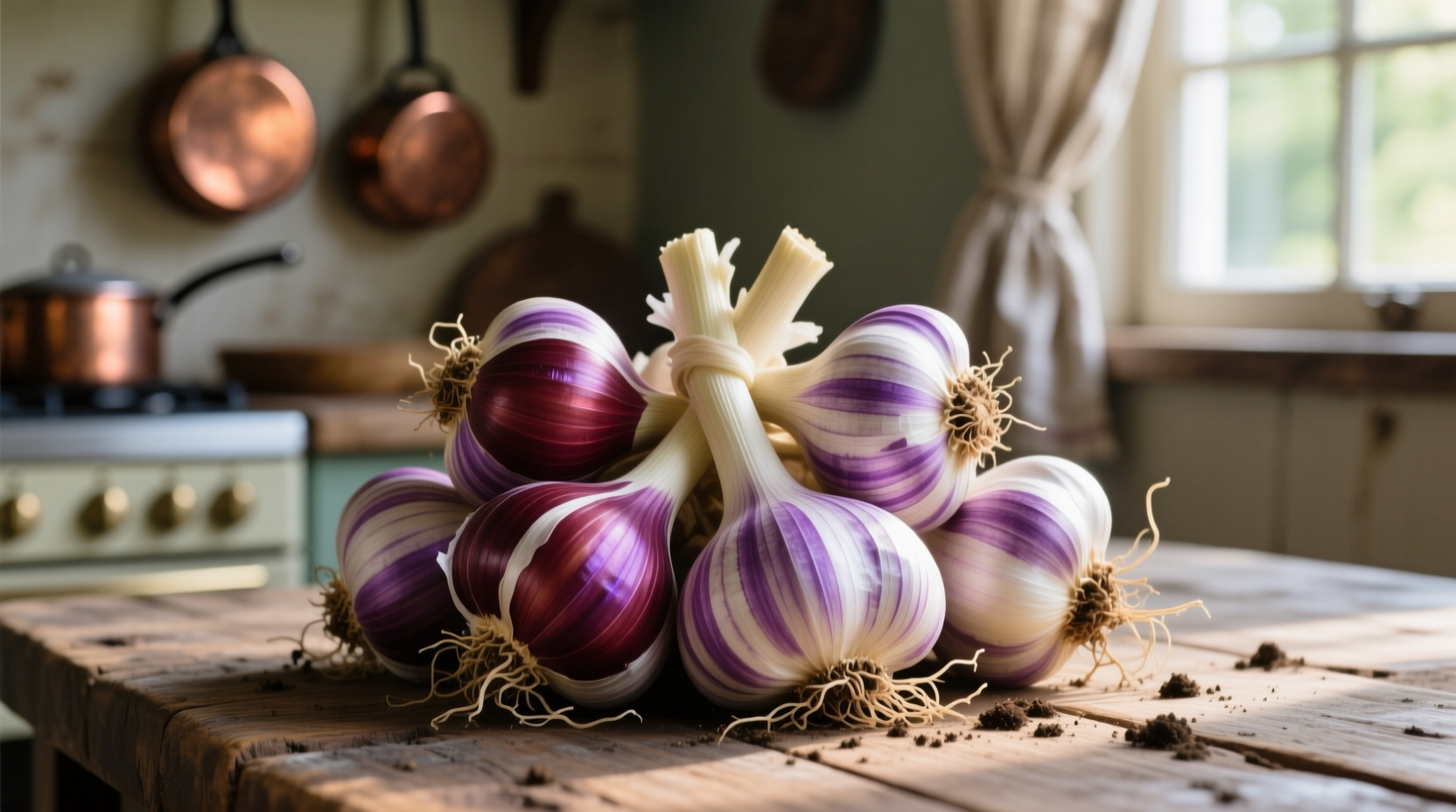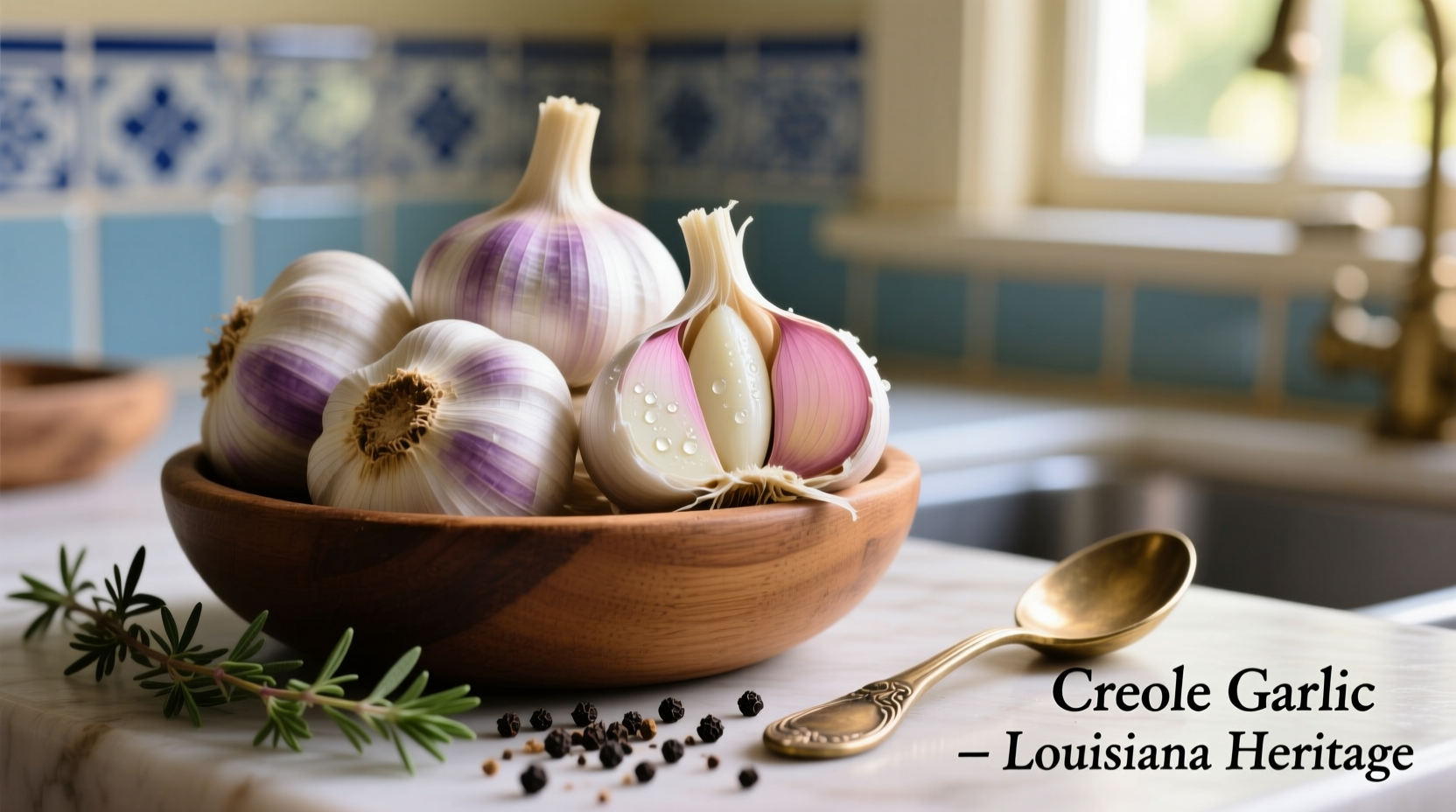As a chef who's worked with hundreds of garlic varieties across European kitchens and Louisiana spice markets, I've discovered why professional cooks consistently reach for Creole garlic when flavor depth matters most. This isn't just another garlic variety—it's the secret weapon behind authentic gumbo, étouffée, and Provençal dishes that home cooks often struggle to replicate.
What Makes Creole Garlic Stand Out From Ordinary Garlic
While most grocery stores stock only softneck varieties like California White, Creole garlic belongs to the hardneck family with distinctive characteristics that impact both flavor and cooking performance. Understanding these differences helps explain why chefs pay premium prices for this specialty garlic.
| Characteristic | Creole Garlic | Common Softneck Garlic | Rocambole Garlic |
|---|---|---|---|
| Bulb Appearance | Deep purple-striped wrappers, smaller cloves | White or off-white, multiple clove layers | Brownish-purple wrappers, irregular shape |
| Flavor Profile | Hot initial bite, complex earthy finish | Milder, one-dimensional | Richest, buttery with medium heat |
| Storage Life | 6-7 months | 9-12 months | 4-5 months |
| Culinary Best Use | Raw applications, bold dishes, roasting | General cooking, long-term storage | Finishing, sauces, delicate dishes |
According to the USDA Agricultural Research Service, Creole garlic contains higher concentrations of allicin—the compound responsible for garlic's pungency and health benefits—than many common varieties, explaining its more intense flavor profile.
The Flavor Journey: From Raw Bite to Culinary Magic
What truly sets Creole garlic apart is how its flavor transforms during cooking. When raw, it delivers an immediate, almost spicy heat that makes it perfect for aiolis and fresh salsas. But unlike ordinary garlic that can turn bitter when cooked, Creole garlic mellows beautifully into complex, earthy notes with subtle fruit undertones.
Professional chefs in New Orleans and southern France consistently choose Creole garlic for signature dishes because of this unique transformation. As documented in the Ohio State University Extension's vegetable production guide, Creole garlic maintains its distinctive flavor integrity even through prolonged cooking—essential for authentic gumbo that simmers for hours.
Where Creole Garlic Excels (And Where It Doesn't)
Understanding Creole garlic's strengths and limitations helps you use it effectively:
- Perfect for: Cajun/Creole dishes, roasted meats, tomato-based sauces, aiolis, and any recipe where garlic should shine
- Use sparingly in: Delicate seafood dishes or subtle sauces where its bold flavor might dominate
- Never substitute in: Recipes specifically calling for mild garlic varieties like Elephant garlic
- Best cooking methods: Roasting whole bulbs, sautéing at medium heat, raw applications where flavor complexity matters
Unlike softneck varieties that can turn bitter when overheated, Creole garlic's flavor compounds remain stable at higher temperatures—a crucial advantage when building flavor foundations for complex dishes.

How to Source and Store Creole Garlic Properly
Finding authentic Creole garlic requires knowing what to look for. True Creole garlic features:
- Distinctive purple striping on the bulb wrappers
- Typically 8-12 cloves per bulb (fewer than softneck varieties)
- Hard central stalk (indicating it's a hardneck variety)
- Available primarily from late summer through winter
Your best sources are:
- Local farmers' markets (August-December)
- Specialty spice retailers
- Reputable online garlic growers
- Certain gourmet grocery stores during peak season
For proper storage, keep Creole garlic in a cool, dark, well-ventilated space—never in the refrigerator. The University of Minnesota Extension confirms that hardneck varieties like Creole garlic maintain quality for 6-7 months when stored at 55-60°F with 60-70% humidity, significantly shorter than softneck varieties but with superior flavor throughout.
Professional Cooking Techniques That Maximize Flavor
Unlock Creole garlic's full potential with these chef-tested methods:
- Roast whole bulbs: Cut tops off, drizzle with olive oil, wrap in foil, and roast at 400°F for 30-40 minutes. The cloves become sweet, spreadable, and complex—perfect for finishing dishes.
- Control the heat: Sauté at medium heat (not high) to prevent bitterness while developing flavor depth.
- Crush, don't mince: For raw applications, crush cloves with a knife to release maximum flavor compounds without the harshness of fine mincing.
- Add early for base flavors: Unlike milder varieties, Creole garlic can be added at the beginning of cooking without losing its distinctive character.
When substituting in recipes, use 25% less Creole garlic than standard garlic due to its more intense flavor. This adjustment prevents overpowering your dish while still delivering that authentic Creole complexity.
Why Creole Garlic Matters in Authentic Regional Cooking
The historical journey of Creole garlic reveals why it's essential for certain cuisines. Originating in the Mediterranean, this variety traveled to France and Spain before arriving in Louisiana with early settlers. Unlike the softneck varieties that dominated commercial production, Creole garlic thrived in the Gulf Coast climate and became integral to authentic Creole and Cajun cooking.
As documented in culinary history research from the Tulane University Cookbook Collection, traditional Louisiana recipes developed specifically around Creole garlic's unique flavor profile. Modern attempts to recreate these dishes with common supermarket garlic often fall short because the flavor chemistry simply doesn't match.
Practical Applications for Home Cooks
You don't need to be a professional chef to leverage Creole garlic's advantages. Try these simple applications:
- Add one crushed clove to vinaigrettes for complex depth without overwhelming acidity
- Substitute for regular garlic in tomato sauces for richer flavor development
- Roast whole bulbs to spread on crusty bread or mix into mashed potatoes
- Use in place of standard garlic for aioli to create a more sophisticated dipping sauce
- Add to bean dishes during the last 30 minutes of cooking for authentic flavor
Remember that Creole garlic's flavor intensifies as it sits after cutting. For best results, prepare it just before use rather than pre-mincing hours in advance.











 浙公网安备
33010002000092号
浙公网安备
33010002000092号 浙B2-20120091-4
浙B2-20120091-4